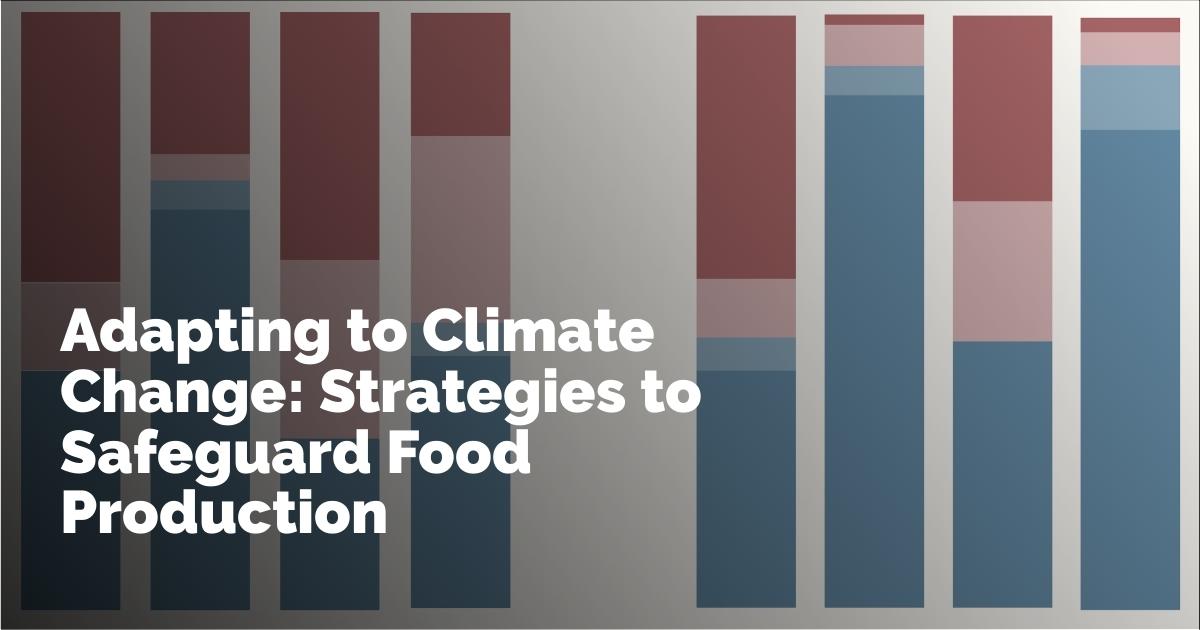Climate Change and Its Impact on Food Production: Navigating Adaptation Strategies
The ever-pressing issue of climate change presents substantial challenges and transformations for global food production systems. While climate change may augment certain crop yields in high-latitude regions, the repercussions are set to be more detrimental across the tropics and subtropics. The precise balance between potential gains for crops like wheat and rice and potential setbacks for others like maize and millet demands a strategic response. This article takes a closer look at how adaptation strategies could offset negative impacts and maintain, if not improve, global food security.
Understanding Adaptation: The Elements of Change in Crop Production
Farmers are not without recourse. Adapting to the evolving climate hinges on strategic changes across various aspects of farming practices. These include:
-
What to Plant: Diversification is key. Switching to crops better suited to new climatic conditions or adopting different varieties of existing crops can heighten resilience. Hardier cultivars bred for drought resistance or shorter growing periods could make all the difference.
-
Where to Plant: There's merit in relocation. Moving crop production to regions where the climate remains conducive—be it further afield or closer to home at different altitudes—can sustain or improve yields.
-
When to Plant: Timing is everything. Adjusting planting and harvesting schedules to align with new seasonal patterns can help exploit optimal growth conditions.
- How to Manage Crops: Comprehensive care encompassing irrigation, fertilization, and pest/disease control remains vital in mitigating climate impacts.
Already, many of these practices are in use, creating a buffer against the approximate 1.3°C of global warming observed so far. This resilience is detailed in studies like that of Lindsey Sloat and collaborators, highlighting the extensive measures already undertaken.
Adaptation's Potential: Offsetting Negative Climate Impacts
On a global scale, the research of Sara Minoli, Jonas Jägermeyr, and their team offers optimistic insights into the power of adaptation. Using projections within the high-impact RCP6.0 climate scenario—which anticipates a 3°C rise by 2100—it becomes evident that strategic alterations to planting times and crop selection can prevent yield losses. For example, maize, which might otherwise see reduced yields, could instead witness improvements through carefully timed planting and the right crop breeds.
Making these adaptive shifts entails practical measures:
-
Timing Adjustments: Optimal planting dates might shift by 10 to 30 days, helping crops like winter wheat avoid premature development.
-
Adopting New Varieties: Leveraging selective breeding efforts can create crop strains tailored to withstand altered climatic variables. These range from temperature fluctuations to changes in precipitation patterns.
While these adjustments may more significantly benefit crops like maize, millet, and sorghum, they also offer some protection to more robust crops like wheat, which might naturally fare better under elevated CO2 levels.
Regional Considerations and Data Limitations
The broader data sets underscore the global potential of these strategies, yet it's essential to focus on the regions at greatest risk. Sub-Saharan Africa and South Asia, often less equipped with scientific data and resources, stand to endure the harshest impacts without adaptation. The relative paucity of research specific to these regions underscores the need for targeted investment and innovation.
Existing studies indicate that even there, altering planting schedules and crop types can yield positive results. In West Africa, such strategies transformed expected yield decreases into gains, while additional efforts in Punjab, India, showed similar potential for wheat.
However, not all regions or crops will find sufficient relief through these means alone—an ongoing issue in places reliant on rainfed cereal production.
The Role of Increased Agricultural Inputs
Globally, increased access to inputs like irrigation and fertilizers has historically driven yield improvements. Climate change amplifies the necessity for these resources. Areas already grappling with water stress could face enhanced challenges, but even without drastic climate shifts, many areas remain bound by existing limitations.
As outlined in recent reviews and examined through maps of global input use disparities, a key priority remains: closing the "yield gap." By equipping farmers with adequate fertilizers and irrigation, notably in places like sub-Saharan Africa, food production could simultaneously weather climatic changes and serve a burgeoning global population. The synergistic impact of improved access with adaptation measures hints at the potential to exceed current yield benchmarks significantly.
The Imperative of Investment and Innovation
To truly capitalize on the possible gains adaptation offers, there needs to be a commitment to investment and innovation across the globe. Governments, private entities, and international agencies must prioritize the development and dissemination of essential technology and resources. The tools for resilience are within reach; actualizing them depends on concerted efforts to ensure accessibility and efficiency.
The Road Ahead: Commitment as the Key Ingredient
Scientific studies affirm that the challenge of maintaining global food security in the face of climate change is surmountable. The time to act is now—through dedicated strategies, robust support systems, and forward-thinking policies. Ultimately, the critical question lies not in whether these strategies can work, but whether we can muster the collective resolve to implement them effectively for the future of global food security.
출처 : Original Source

